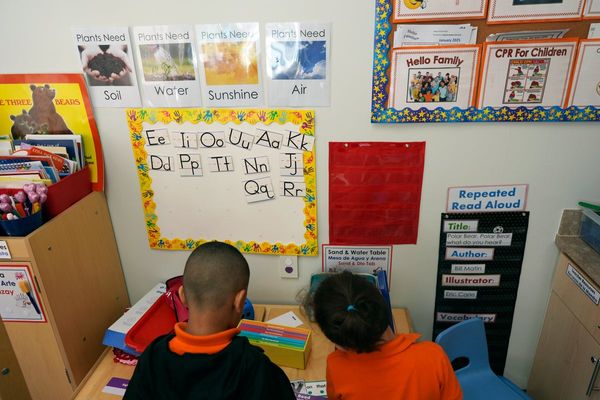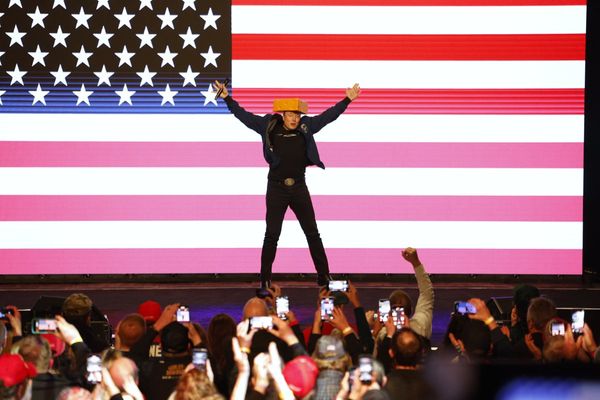
- Tesla's We, Robot event is happening tonight in Los Angeles.
- The automaker is expected to reveal an autonomous taxi.
- Big questions remain about how Tesla would actually stand up a robotaxi business that could compete with the likes of Waymo and Uber.
Elon Musk has been making huge promises about self-driving cars for about a decade. And yet, Teslas still can’t drive themselves. On Thursday, Tesla’s CEO will have his best chance yet to lay out a clear vision and prove to the world that he isn’t all talk.
The automaker is set to reveal its most-hyped new vehicle in years: a purpose-built autonomous taxi that could serve as the backbone of a future Tesla-operated ride-hailing service.
Yet Tesla still needs to address big questions about how its robotaxi network would practically work, and whether it can be a significant profit driver in the near term. The answers, should they come at Tesla’s event or in coming years, will define whether the robotaxi network becomes a legitimate business or just another example of Musk’s bluster around AI.

Tesla’s ambitious business model raises thorny questions. Musk envisions that Tesla will operate some “Cybercabs,” while also allowing owners of regular Teslas to deploy their vehicles to an Uber-like network and earn side income. Moreover, Tesla has said it doesn’t want its autonomous vehicles to be limited to small geographical areas like competitors are. Google’s Waymo, the gold standard for robotaxis in the U.S., operates in growing regions of San Francisco, Los Angeles, Phoenix and Austin.
Even if Tesla could someday update its Model 3s, Model Ys and Cybertrucks to grant them autonomous capability, will owners actually sign up in droves like Musk expects them to? Or will the additional upkeep, wear and tear and risk of damage outweigh the potential benefits? Who will take the blame if a Tesla gets into a crash? Who pays for insurance?
“While consumers may be enticed by the idea that their vehicle asset can make money for them when the vehicle is not in use… is an individual really ready to let the Model Y they spent ~$45,000 on be used by strangers?,” UBS analysts said in a September research note. “We believe human behavior may be difficult to overcome.”
Meanwhile, Tesla has not started on the basics of what it needs to do to launch a driverless taxi network safely, said Alex Roy, a former executive at the now-defunct self-driving startup Argo AI and a cofounder at New Industry VC, a venture capital firm.
Waymo spent years conducting human-supervised and then driverless testing in the areas it operates in. Only after that did it start opening things up to paying customers. Tesla has not started driverless testing in the most obvious places for a taxi business, like airports, much less across the entire United States, Roy said.
“Until we have seen driverless Teslas doing testing with airport pickup and drop-off curbside somewhere, there isn't really much of a business to be had,” he said. “That's how you scale a robotaxi business profitably.” Busy airports are particularly challenging environments for autonomous vehicles, Roy added, and they’re also a key source of revenue.

Accordingly, Roy doesn’t think Tesla’s event will reveal anything that can be commercialized soon. “I expect it to be a narrative-supporting spectacle,” he said.
Next, there’s the vehicle itself. One of Musk’s most-used catchphrases is the following: “Prototypes are easy. Production is hard.”
Parading around a one-off demonstration vehicle is one thing. Actually building it at a meaningful scale is another ballgame entirely. And Tesla doesn’t have the strongest track record when it comes to punctuality. It unveiled the flashy Roadster supercar in 2017, and that car still doesn’t exist.
JPMorgan analysts learned from Tesla’s investor relations team earlier this year that the Robotaxi will use Tesla’s next-generation manufacturing process. That means the robotaxi is still “some years away,” the analysts said in a June report.

Tesla will almost certainly hit regulatory hurdles, too, particularly if it wants to deploy a vehicle that’s far outside the bounds of federal motor vehicle safety standards. Musk has said the taxi won’t have a steering wheel or pedals—but such a vehicle could also lack required design elements like mirrors. Cruise, General Motors’ robotaxi outfit, recently scrapped plans to deploy a driverless pod called the Origin, citing regulatory uncertainty. (Though it’s got other, more pressing problems, too.) Zoox, Amazon’s self-driving outfit, landed in hot water with regulators after it self-certified its own bidirectional driverless pod.
That being said, Bryant Walker Smith, a law professor at the University of South Carolina specializing in automated vehicles, said Tesla’s main headwind isn’t regulations—it’s actually creating driverless technology and a business around it.
“These are not the questions that are facing Tesla,” he told InsideEVs. “It would be like if Tesla announced that it was thinking about going to Mars, and we were asking about whether OSHA regulations apply.”
From there: How will Tesla get riders to participate? The automaker has shown preliminary designs for an Uber-like app, and we may learn more about that on Thursday evening. But it won’t necessarily be straightforward for Tesla to manage that kind of business or get people to switch away from their preferred ride-hailing app.
Waymo, for its part, struck a deal to add its cars to the Uber platform in Austin and Atlanta, and some industry watchers think Tesla would be wise to do the same. The UBS analysts noted that a partnership like that could help Tesla both manage and market its robotaxis.

Those most bullish on Tesla have high hopes this will all work out.
Ark Invest, a firm invested in Tesla and one of its most optimistic boosters, said it expects the automaker to launch a robotaxi service by late 2025. By 2029, it projects that business will bring Tesla some $750 billion annually, catapulting the company to a market capitalization of $8.2 trillion. (That’s more than Apple and Microsoft, the top two most valuable public companies, combined.) Although Tesla makes nearly all its money by selling cars, that narrative about AI has propelled it to a valuation of over $750 billion, way more than any other auto company.
Others aren’t convinced it will be so quick or easy.
“We believe wide-scale Tesla robotaxi deployment is unlikely within the coming years,” UBS analysts said in their September report. “That is not to say Tesla isn’t making technological progress, but Tesla needs to show that the tech is ready and safe, deal with a myriad of local regulations (city by city), and (potentially) figure out logistics and operations of a transportation network company (TNC).”
The research firm S&P Global does not expect robotaxi services to be widespread before 2035. For the foreseeable future, the firm believes the robotaxi industry will grow but remain limited to hyper-local areas by technological, regulatory and economic constraints.
After years of hype, there’s been a growing realization among automotive players that making a business out of autonomous driving will be more difficult, time-consuming and costly than they had anticipated, said Jeremy Carlson, the firm’s associate director of autonomous driving research. Developing and deploying autonomous taxis requires enormous upfront investments, and scaling up is tough, he said.

Waymo recently announced it’s serving up 100,000 rides per week. So it’s generating some revenue, but isn’t profitable yet. In July, Alphabet said it would commit another $5 billion to the project.
JPMorgan analysts said they don’t expect Tesla’s Robotaxi business to generate “material revenue” for years to come. They said Tesla’s success all depends on whether its bet on cheaper self-driving technology (cameras and AI instead of the more conventional LiDAR, radar and maps) pays off. That approach could be a “home run or ineffective,” they said.
That brings us to the real question mark here. The ins and outs of a Tesla robotaxi network are fun to ponder, but it all ultimately hinges on if—and when—Tesla can create safe autonomous vehicles.
“On a long enough timeline, the success of any technology is 100%,” said Roy, the former autonomous vehicle executive. “Whether it can be a business is determined by how long that takes.”
Contact the author: tim.levin@insideevs.com







